The year was 1966. Here I was, a young laddie dawdling down through the streets of Arnold in Nottinghamshire down towards the main shopping place. I had my new school uniform on for the first time, never having worn one before it was causing no little irritation. A black blazer, grey short trousers and a black cap with an embroidered badge on the front proudly proclaiming The British School in a white on black design. The cap was too big and was slipping down over my ashen face, the shorts were itchy and the jacket stiff unyielding and boxy. I really, really didn’t want to be here as I stepped along Front Street.
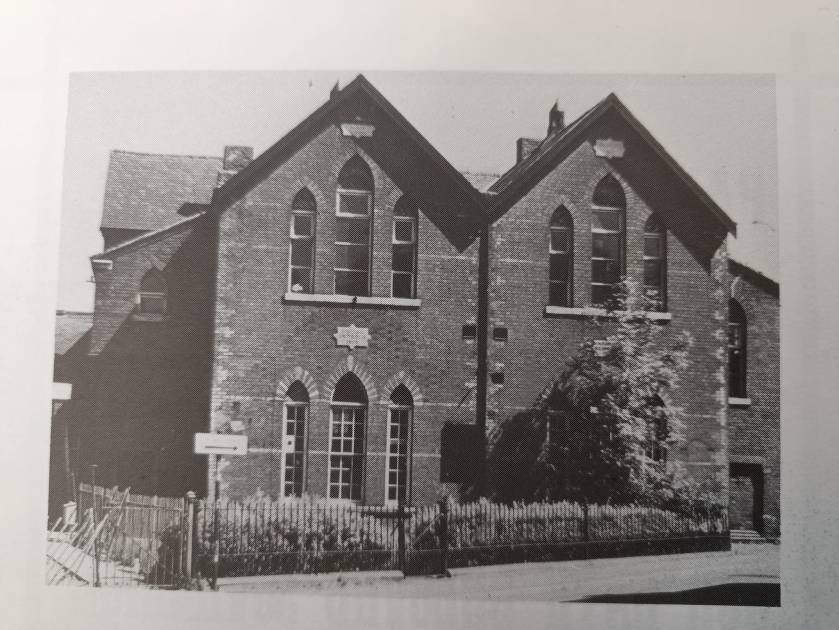
The British School, Arnold Nottingham (Image: unknown)
Walking to junior school that first morning was a trial. Stomach churning and gurgling, I looked around for a familiar face only to see much bigger lads who looked like they could easily bully me, especially in the slightly sneering gangs they appeared to be formed in. Finally, I spotted a friendly face. It was my friend Victor from Wellington Street, also traipsing forlornly along in his brand new uniform. Although Vic was a big raw-boned lad, his own new school cap was pulled right the way over his face, the brim almost touching his chin. Vic liked to wear his cap that way. For some reason he thought it made him cut a dash. It’s not recorded what he said when he inevitably bumped into lampposts and other various inanimate objects.
Taking our hearts in our hands we walked over the zebra crossing and pausing for a last breath of freedom, entered into our new school together, looking around desperately for familiar faces but to no avail. Finding a quiet part of the youngsters playground we waited for the death knell of that first school bell at 9am. Exactly on time it rang out whilst our inner shudders echoed to it.
Have you ever watched sheep being herded into a pen? Well this is exactly how it was as the new flock of petrified boys in their identical blazers and caps were ushered abruptly inside the old building. Presently, the form teacher arrived and she was terrifying. An older lady nearing retirement, her years of teaching had sadly left her hardened and without compassion for us young lads. She barked us into our new classroom and ordered us into seats. School life was about to change forever I thought.
The first thing I noticed was how different to my old school my new classroom was. It was decrepit, not that I knew what decrepit meant in 1966. What I did know was that the strange, scurrying noises up in the roof above the high ceiling sounded a lot like pigeons roosting. Surely not? The lines of ancient desks still had their ink wells for dip-in ink pens. The gloopy blue liquid being supplied in turn by a reticent ink-monitor. (I was holding out for one of the coveted milk-monitor positions.)
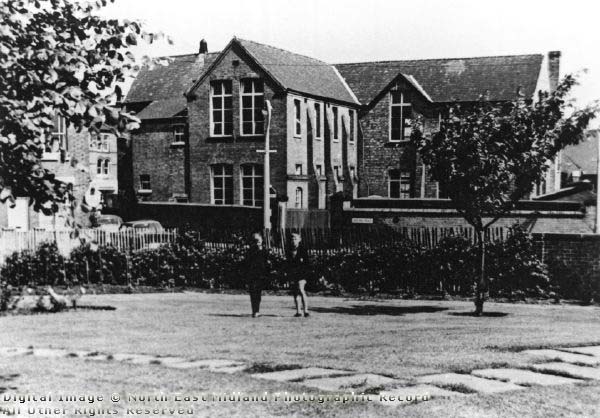
The British School, Front Street, Arnold, Nottinghamshire circa 1960
(Image: unknown)
The form teacher was soon into her blunt, hard-nosed and shouty lessons. I hated them. On one memorable morning for all the wrong reasons she bade me out to the front of the class to complete a sum on the blackboard which nobody else had been able to thus far. I failed too, I didn’t have a clue. she made me stand there however and humiliated me until I fell into tears in front of the whole class. The classroom was otherwise hushed apart from her shrill haranguing and my quiet sobs. Thankfully the playtime bell came to my rescue when my new mates commiserated with me in the playground and said how much they hated ‘the old cow’.
There were some good memories from the school. A great source of interest to us lads were ‘Batman’ cards which we bought voraciously with packs of bubblegum which was chewed with equal enthusiasm. The newsagent and sweet shop on Front Street just up the road was the main source for our collections. Other favourite pocket-money purchases were Milk Chews costing a penny each, Sherbet Dabs with their stick of liquorice and tart reaction, also Blackjack and Fruit Salad chews at four for a penny, the Farthing coin being no longer with us.
The sporting front in Nottingham at that time showed the two city clubs, Forest at the top of the First Division and Notts County at opposite ends of the four divisions with around ninety places between them. Forest were battling manfully against the Manchester United of Best, Law and Charlton whilst the local Reds boasted scoring machine, Joe Baker plus Ian Storey-Moore and Terry Hennessey. We lads quickly got into collecting football stamp cards on glossy art paper. One George Best being worth a Roger Hunt, a Bobby Moore AND a Jimmy Greaves.
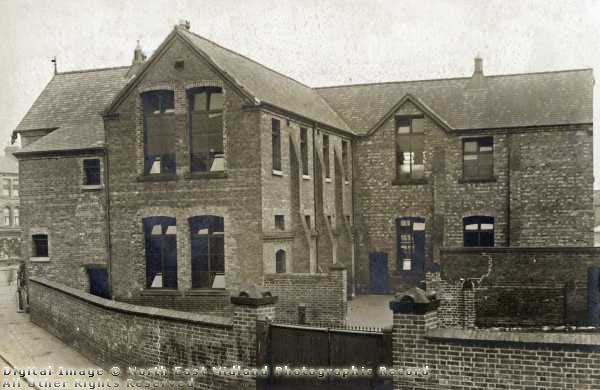
A starker, older view of the ancient school showing the playground with its high walls in the foreground. Yours truly’s classroom was behind the two windows to the lower right, the adjacent doorway, our road to freedom for a ten minutes ‘playtime’ morning and afternoon. (Image: unknown)
The school year remorselessly ground on. Cricket and our other games in the playground seemed the only relief from one mean-faced teacher after another. Games of marbles through the surrounding streets on the way home washed away our thoughts of the days. It was a year of Victorian-style education. I’d like to say the discipline was a good lesson for me but in my heart I can’t. There seemed no compassion towards us, no quarter given and little praise, just a grey time. Perhaps the only vivid memory of my time at ‘The British’ besides the episode with the tears was in the form teacher instructing us that the year was 1966 and that it that such a date only happened ‘once every ten years’. Startling stuff. I think my true education from that time was more gleaned from the vast array of comics I would read.
The British School had originally been a boarding school and had a history going back to 1868. This was to be its last year in the sun as after one year, I and the rest of its pupils were dispersed to other schools in order for it to be demolished. Things moved back into the 20th century with a move to Church Drive Junior School for me which was an entirely happier experience I’m glad to say. The form teacher retired after the school bell was sounded for the very last time. Her time was at an end.
For people who know Arnold in Nottinghamshire The British School stood on the east side of Front Street exactly where the Arnold outdoor market came to be situated. In recent times it has changes its usage once more with the creation of the Arnold Market Place (AMP) project. Where those many stalls sold their wares for the past forty-something years was our high walled playground. Memories yes, but I lament The British School not.



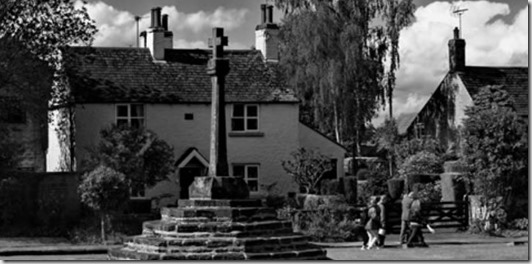









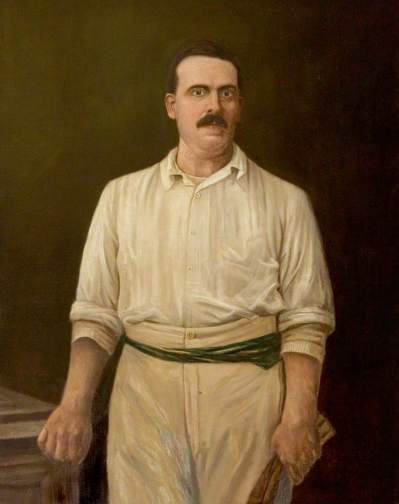



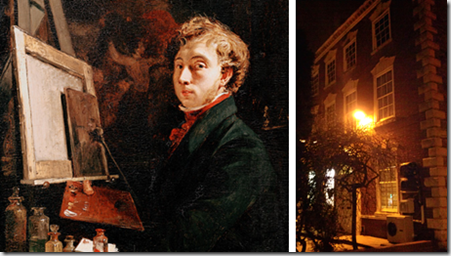





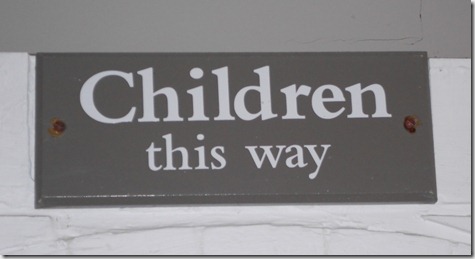




















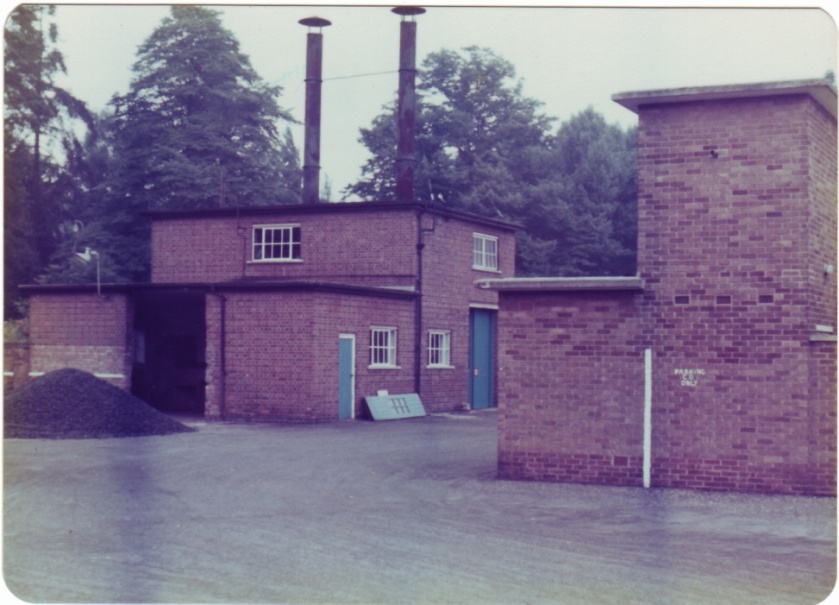

 famous mystery still unsolved to this day.
famous mystery still unsolved to this day. at both 400M and 800M in Beijing to become the first swimmer in the games for around 100 years to perform such a feat.
at both 400M and 800M in Beijing to become the first swimmer in the games for around 100 years to perform such a feat. conurbations are Southwell and it’s mighty Minster which is six miles to the south, and the historic market town of Newark-on-Trent to the east.
conurbations are Southwell and it’s mighty Minster which is six miles to the south, and the historic market town of Newark-on-Trent to the east. difficult transcribing, but no bother really. 2.30pm heralded a trip to pretty Brackenhurst College for a 3pm start. I drove into the car park and left my car under an avenue of gorgeous Spring time apple blossom. It’s difficult to explain but at that moment I felt very blessed to come along to work in this place – after travelling through all the attractive villages I know so well.
difficult transcribing, but no bother really. 2.30pm heralded a trip to pretty Brackenhurst College for a 3pm start. I drove into the car park and left my car under an avenue of gorgeous Spring time apple blossom. It’s difficult to explain but at that moment I felt very blessed to come along to work in this place – after travelling through all the attractive villages I know so well.




 An increased police presence has partly altered this state of affairs, locals state. I don’t particularly want to dwell on this issue too much apart from to say that running and walking in those woods is something I have done for many a year and that I hope others are afforded the opportunity to do that unhindered and without embarrassment too.
An increased police presence has partly altered this state of affairs, locals state. I don’t particularly want to dwell on this issue too much apart from to say that running and walking in those woods is something I have done for many a year and that I hope others are afforded the opportunity to do that unhindered and without embarrassment too.

 triumph of the power of the public’s love of the preservation of nature over the incessant march of industry.
triumph of the power of the public’s love of the preservation of nature over the incessant march of industry. and well-established suburb a few miles north of Nottingham and is close to open countryside and cheek by jowl with the larger suburb of Arnold with it’s shopping area, facilities, and a population of approximately 38,000 people.
and well-established suburb a few miles north of Nottingham and is close to open countryside and cheek by jowl with the larger suburb of Arnold with it’s shopping area, facilities, and a population of approximately 38,000 people. le coming to work in the mine, the Lancaster’s built sixty-four houses, an Institute, Offices, a school and an Ironworks. Before the colliery the Bestwood area was a peaceful place full of woodland only, with few people living there. There were two mills nearby on the River Lean that housed child workers but very few other people. Up to 2000 men came to work in the mine; many of them came from nearby areas like Arnold and Hucknall. The Colliers Pad, where miners walked to work from Redhill still exists. The winding house that used to lower the men down into the mine still stands. It has a large engine inside which would operate the ‘cage’ lowering miners down below ground. It would also bring the coal to the surface.
le coming to work in the mine, the Lancaster’s built sixty-four houses, an Institute, Offices, a school and an Ironworks. Before the colliery the Bestwood area was a peaceful place full of woodland only, with few people living there. There were two mills nearby on the River Lean that housed child workers but very few other people. Up to 2000 men came to work in the mine; many of them came from nearby areas like Arnold and Hucknall. The Colliers Pad, where miners walked to work from Redhill still exists. The winding house that used to lower the men down into the mine still stands. It has a large engine inside which would operate the ‘cage’ lowering miners down below ground. It would also bring the coal to the surface.